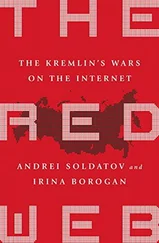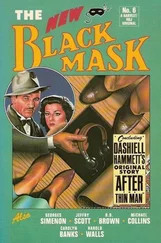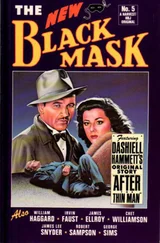Now I would like to show you a little something, a very small detail that is connected to the aspect of consistency. That, after all – and I would like to highlight this most emphatically – is the most fundamental principle in Schoenberg, that everything that happens leaves its trace in time, as it were, that it is a music in which nothing is forgotten. And that is the foundation of the peculiar awareness of time at the heart of Schoenberg’s music, something that should really be analysed in detail. If you take other composers who were using variation techniques around 1900, they used, as you all know, what Richard Wagner called ‘psychological variation’. 19That is, the motifs are reshaped according to their characteristics. But despite this reshaping, which is sometimes very extensive in Strauss – just recall the characteristic notes of Salome’s motif, everything that happens to them, that is really a very far-reaching variation, starting from this [plays Strauss, Salome ], he does an incredible amount with this – but despite this variation, the motifs are always strung together, I would say. There is really always something strip-like in all this neo-German music, like a film strip, where small shots, small, minimal pictures of motifs are placed next to each other and then connected; whereas the essential thing in Schoenberg is that the variation intervenes, that the theme, every thematic event, has consequences in the sense that it leaves traces in what follows, but also that what follows must never be the same or simply correspond to what has already been; for in music, as a temporal art, there is really no such thing as mathematical equality, because what comes later, simply by virtue of coming later, has a different function from what precedes it, and one must actually elaborate this other function compositionally. And through this technique of intervening variation, the fact that things are not simply strung together, but that everything that follows is both identical to what precedes it and also not identical to it, which results in the far denser thematic fabric that you know from Schoenberg.
Now, let me just give you one example of the idea of the large interval, which, quite aside from the fact that the motif I played you is one of the main motifs, also has a certain bearing on the construction of the other themes. You will recall that the themes from Gurrelieder I demonstrated to you earlier, that they all moved within a relatively narrow intervallic range, that they had a stepwise, diatonic character or even a chromatic character. But after this major event takes place, this wide-interval theme, the idea of the large interval continues to have an effect, one might say. So there is this exceedingly beautiful song on page 58: ‘Du wunderliche Tove’ [How strange you are, Tove]. This song corresponds to the first song, in a sense, because it is also homophonic, also in a flat key, also in 3/4, and it also shares something of its tone. But now the intervals are much wider. So, in other words, after this emancipation of the melodic line in ‘Nun sag ich dir’s zum ersten Mal’ [Now I shall tell you for the first time] that I played to you earlier, from there on the themes learnt to stand on their own feet, so to speak, so that they can now allow themselves to indulge in far greater intervallic freedom. So please listen to the line here [plays Gurrelieder ]. But that is not the only interesting thing about it. Rather, you have something here that is very characteristic of Schoenberg’s approach to metric structures. With its exclamation ‘Du wunderliche Tove’, the first phrase is very short, almost a little abrupt [plays]. Now, the second entry is somewhat similar, and likewise has three bars. But already – and here you have all of this Schoenbergian sensibilité , this incredible sensitivity to anything rigid, mechanical, motionless – after the first phrase he has a long ending [plays], then in the second phrase [plays] he goes on immediately [plays]. In other words, because the space between the second phrase and the beginning of the third is shortened to a crotchet rest, the monotony that might otherwise have ensued because of the two three-bar phrases is already paralysed because the second one immediately shifts to a different metric form, and this is the first instance of a four-bar unit, which one might say fulfils the form. Now listen – please try to listen very closely, these are really the compositional details that matter. So he starts with a three-bar unit. This is followed by a transition, likewise three bars long, and then a second three-bar group in the voice whose note values, with one exception, correspond to the first so that one almost worries, one expects fearfully, that a symmetrical transition will now follow. But instead the music moves on immediately, and the rapidity of this continuation undoes the symmetry after the event, as it were, and the second three-bar unit now becomes the antecedent of another irregular period, shortened to seven bars, whose consequent has four bars. This is of such consequence that the next period follows in very close succession but is now expanded to nine full bars, if I am not mistaken, thus creating a large formal arc, and then there is another instrumental transition. In keeping with the extension of these arcs, however, this is also expanded to five bars. So you see how the proportions here all depend on one another. That is, this tendency to extend the arc, which really comes only from the quicker succession of the third entry after the second, this first brings about a seven-bar unit, but then this impulse to lengthen the phrases continues until we reach nine bars; and, on the other hand, this must also have consequences for the idea of the brief instrumental transition,and accordingly the next transition is likewise extended. Now, take a look at the whole thing; I will play it for you once more so that you understand not only its rhythmic variety – on its own, this variety would not be at all interesting – but so that you understand the sense in the succession of these different proportions in the piece’s periodic structure. And the whole results only from the problem that arises, namely how to develop a rather call-like, appellative phrase into a song whose parts are joined into long lines. The first introduction, incidentally, the first instrumental introduction that begins the song is only two bars long, that is, one bar shorter than the others, so that the metric units grow longer very organically and gradually [plays].
Now, I would like to show you something else in order to demonstrate how Schoenberg actually composes. Look, this theme with the marking ‘very calmly’ on page 59, this is introduced here only as a consequent to the instrumental transition [plays], and so forth. Now, it is a fundamental part of composition to assess the relative weight of the melodic ideas in comparison to one another. This theme, this individual idea, has a very large weight. It is so vivid, so characteristic, that it cannot simply remain intermittent but must emerge as a form of main theme. It is very difficult, or we just have no time, to put these things in very exact musical terms – we could do it if we addressed the question of why this theme has this individual weight. One of the reasons, of course, is that the tonic is reached definitively here and then remains above the dominant, which already gives it a very striking character in harmonic terms. But it is also partly due to the use of intervals. It is this theme [plays]. And this theme now has a very clear character of a consequent, an Abgesang . Schoenberg feels this so strongly that, once the song has developed much further, he closes with a general pause and then brings this theme back as a pure, very clear Abgesang – I am leaving aside the requirements of the text and am speaking purely musically – only because this character of a consequent or closing group to the theme demands that it is introduced at the end, as an ending theme. The theme has the weight of an ending, the weight of something that is coming to an end, and Schoenberg feels this weight. In composition, then, it is generally vital to feel the specific weight of the individual themes, to feel which theme has an ending character, which has a positing, thematic one, which has a continuing one, which has a transitional or contrasting one, and so on. And I want to say time and again that Schoenberg’s true greatness as a composer, it seems to me, lies in the fact that he had an instinct for these elements of musical language as elements of musical sense shared by hardly any other composer. So I will play you the end of the song so that you can see how that appears now, as an Abgesang or a coda, if you like [plays]. As an aside, one might say the following about the formal approach: he simultaneously weaves the reprise of the theme’s first entrance into the Abgesang , but now as a retrograde, in such a way that he presents what was the continuation theme [plays] first, and then, with his unerring sense of form, he uses this seal-like invocation of the very beginning, which eludes all variation, which cannot be varied, as a renewed invocation – but now an ending one, so that it closes with the words ‘Du wunderliche Tove’. So he has this character of a closing group, then moves to the continuation theme, which is in the middle again, logically enough, and then the opening theme forms the end, which creates this incredibly compelling and convincing closing effect. Perhaps you can have another look at it now to see – it’s on page 61 – to understand this formal shaping [plays].
Читать дальше












